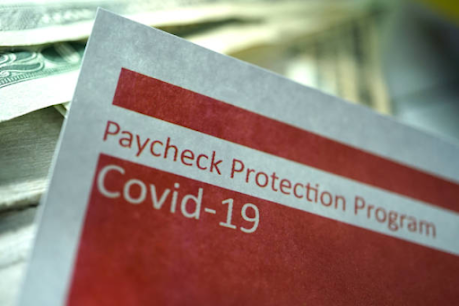ERTC Funding: How To Apply For Employee Retention Credit?
The Employee Retention Benefit (ERC) is a tax credit offered to small business owners, S-Corps, LLCs, and 1099 workers. This benefit, like the $1,200 stimulus cheque taxpayers got, is intended to assist small companies during these difficult times.
The ERC is not a loan. It is a tax credit, i.e., it does not have to be returned. Businesses could only claim one of the PPP or the ERC in the first stimulus, not both. That regulation has been modified, and firms may now apply for both financing possibilities, giving much-needed relief and assistance. This means you can apply for Employee Retention Credit even if you have applied for PPP.
The Employee Retention Credit is a fully refundable tax credit for employers equivalent to 50% of eligible salaries (including allocable qualified health plan expenditures) paid by Eligible Employers.
This Employee Retention Credit is applicable to eligible salaries earned on or after March 12, 2020, but before January 1, 2021.
What Paperwork Must I Complete In Order To Apply For Employee Retention Credit (ERC)?
Forms 941 – Employer's Quarterly Federal Tax Return
Q1, Q2, Q3, Q4 2019 Financials
Form 8655 – Reporting Agent Authorization
PPP Applications and Forgiveness, as applicable
Q1 2021 Financials
Forms 7200 – Advance Payment of Employer Credits Due to COVID-19
Q1, Q2, Q3, Q4 2020 Financials
Shutdown or suspension of operations by government order
Client Services Agreement and Fee Arrangement
Power of Attorney
Forms of any other COVID-19-related grants
How To Apply For Employee Retention Credit (ERC)?
Companies that want to claim the ERTC must declare their total qualifying earnings and health insurance expenditures on their quarterly tax filings (Form 941 for most employers). This refundable credit will be applied to the employer's Social Security tax.
Further, employers may choose to keep the value of employment taxes up to the amount of the ERTC rather than deposit it before getting the credit, without penalty. Besides, eligible firms with less than 500 full-time employees may also obtain ERTC advance payment using IRS Form 7200. However, employers with more than 500 workers are ineligible for advanceable ERTC.
Despite the fact that the ERTC expired on October 1, 2021, firms can still apply for a retroactive ERTC refund using Form 941-X. This form can be used to amend employment taxes that were submitted within three years of the initial return or two years after the employer paid the tax. As a result, qualifying enterprises that did not initially claim their ERTC may be able to do so until 2024, depending on when they first filed or paid their company taxes. Employers should remember that this retroactive reimbursement is available for the 2020 and the first three quarters of the 2021 tax year. The qualifying conditions do not apply for Q4 of 2021 or the 2022 tax year and beyond.
So, if you want to enjoy the ERC benefits, you can get in touch with ERC Specialists. They'll assist you in applying for ERC hassle-free.
FAQ's
Employee Retention Credit: How Does It Work?
The Employee Retention Benefit is a refundable tax credit provided to qualified employers. Specific business owners are entitled to a proportion of qualifying wages paid to employees after March 12, 2020. However, before January 1, 2021, based on specific parameters such as employee cap and qualified earnings.
Employee Retention Credits Are Available To Whom?
To qualify as a qualified employer, you must be able to demonstrate that your firm was harmed in one or more of the following ways: Your company had a partial or whole closure in 2020 or 2021 (this includes being limited by commerce, inability to travel, or restricted group meetings), or a decrease in gross receipts (a business may be eligible for one quarter and not another).
When It Comes To Employee Retention Credit, What Can I Do With It?
The Employee Retention Credit is effectively a reimbursement, which means you can't spend it any way you like. However, because it is a fully refundable tax credit, you can get up to 50% of $10,000 in earnings every quarter for each employee if you are eligible and were harmed by the epidemic.



Comments
Post a Comment